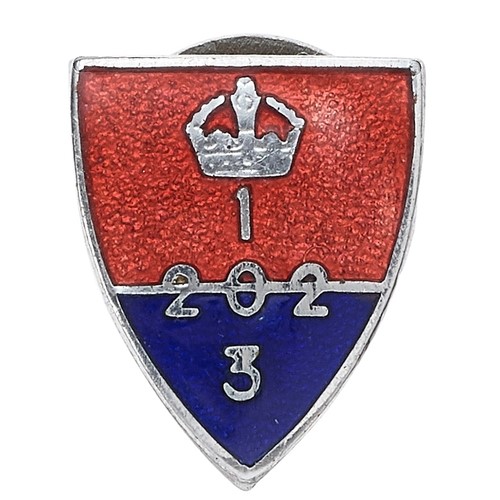
By Daniel Brinson
The Auxiliary Unit badge (pictured above) is a very small enamel badge issued to a small group of men who were prepared to pay the ultimate price for their country during wartime. Its actual size being no larger than a penny and its meaning known only to members of this special group of combatants.
During the early part of the Second World War when Britain faced the might of the German forces alone, the threat of invasion was a serious worry to the nation’s leaders. The Local Defence Volunteers, who would later become the Home Guard, were raised in 1940 and released British troops to fight abroad.
Numbering one and a half million they kept watch, ready at all times to put up a limited local resistance, and should the German forces invade. The Generals and politicians were well aware of the speed at which an invading force could move once landed. The need for a resistance force following invasion was recognised and following the evacuation at Dunkirk, a very secret plan was put into action.
Small units of specially selected men were recruited to become resistance fighters. These men would be very knowledgeable of their surroundings. Farmers, landowners and poachers were suitably qualified and may be selected to join the new Auxiliary Units.
They would be trained in survival techniques and go to ground if required to do so. Working in small groups of six to eight men these units would hide in underground bunkers, set up and equipped to operate without any assistance whatsoever.
They would lie low for two weeks allowing enemy forces to pass their locations, only to start their work of subversion once the attacking force had passed. Their training had prepared and equipped them to cause havoc, chaos and destruction to the enemy.
Trained in weapons, explosives and guerrilla techniques, they worked independently from all other units wearing Home Guard uniform and insignia. These included 201 (Scotland), 202 (North of the Thames) and 203 (South of the Thames) cloth badges.
From Scotland to Cornwall over four and a half thousand men signed the Official Secrets Act ensuring no one was aware of their role should an invasion take place. Due to the nature of their task, life expectancy was short, limited to days only.
Following the step down of the Home Guard and the Auxiliary Units in 1944, a lapel badge was produced for all members and ex-members as a token of service with Auxiliary units.
This was issued at a cost of 6d (£1.00) as there were no funds to pay for such items. As members had signed the secrets act and the badge did not indicate it’s use, many went by the wayside without knowing just what they were for.
It may be the smallest artefact at The Keep but it has a very interesting history.
Visit Bodmin Keep
This and many other items related to the Home Guard can be found on display at Bodmin Keep: Cornwall’s Army Museum. Visit us and see for yourself.

